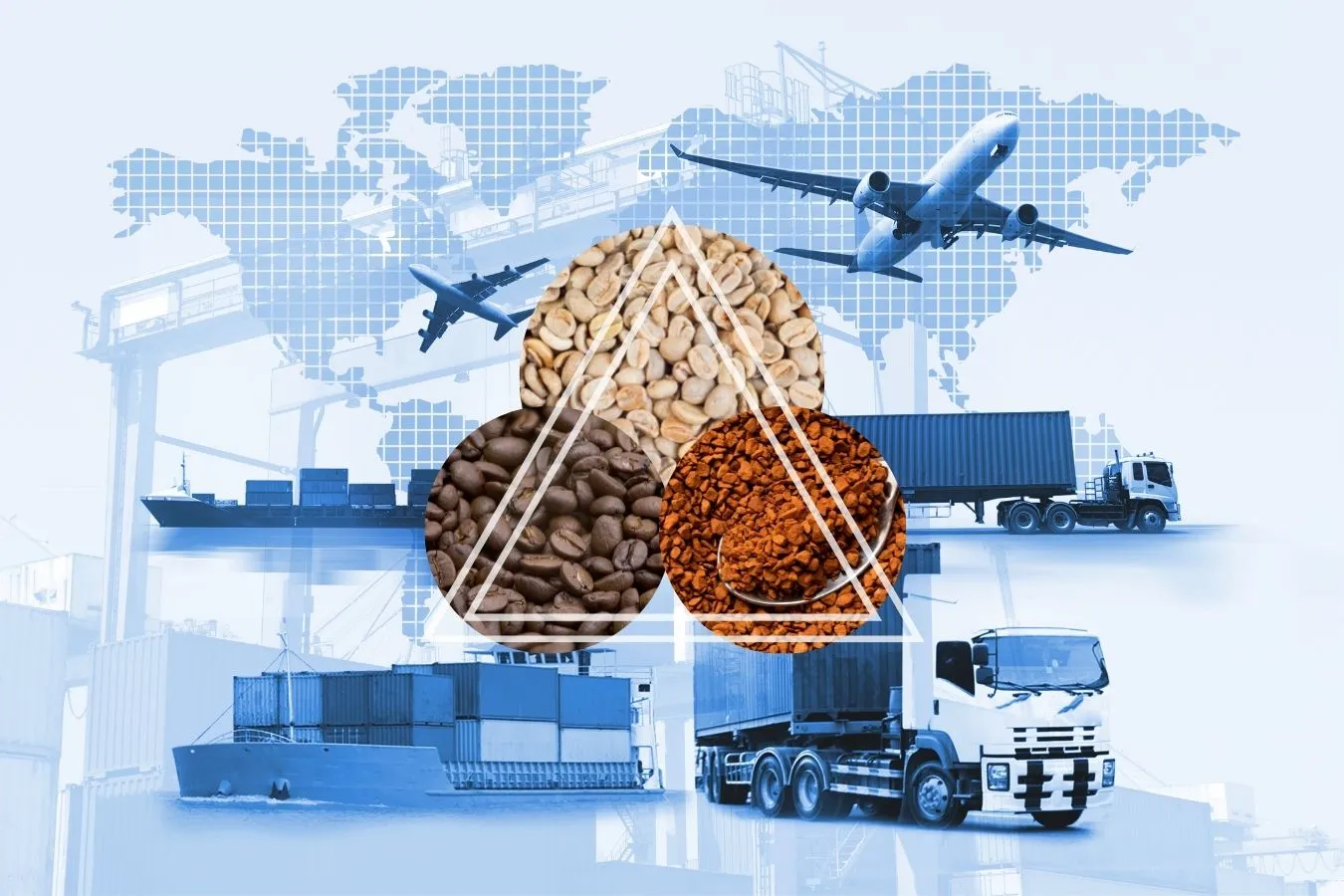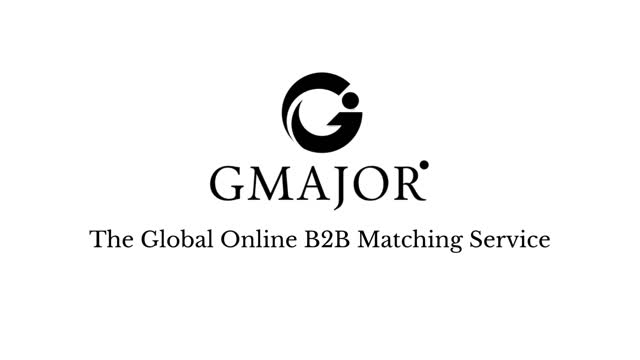Coffee Export: A Detailed Guide to Optimizing Business Processes
Discover the potential of Vietnamese coffee exports and the opportunities to reach international markets. Explore the advantages, export procedures, and how to connect with reputable suppliers through our B2B platform. Ensure quality and optimize your coffee business today!

Vietnamese coffee is not only a popular beverage but also one of the country’s major agricultural export products. With its rich flavor and high quality, Vietnamese coffee has been dominating the international market, bringing significant revenue to the economy. This article will help businesses and exporters better understand the potential, opportunities, and advantages of exporting Vietnamese coffee, thereby optimizing their business processes and achieving success in the global market.
1. Advantages of Vietnamese Coffee
- Quality and product diversity: Vietnamese coffee is famous for its two main types — Robusta and Arabica, each with its own distinctive flavor and excellent quality. In addition, processed coffee products such as roasted coffee, instant coffee, and coffee capsules are increasingly favored, meeting the diverse demands of the international market.
- Modern production and processing processes: Vietnamese coffee enterprises have made strong investments in advanced technologies and have applied strict quality control procedures. From cultivation, harvesting, to processing and packaging, every step is carefully monitored to ensure that the coffee products meet the highest standards and satisfy the strict requirements of international markets.
- History and reputation: Vietnam has a long history in coffee cultivation and export and is currently one of the world’s leading countries in both production volume and export quality. The reputation of Vietnamese coffee has been established over many decades, helping it easily access and conquer the global market.

2. Potential Markets for Coffee Export
- Europe: Europe is one of the world’s largest coffee-consuming regions, with high demand and a willingness to pay premium prices for quality coffee. European consumers care deeply about the origin and production process of coffee, creating favorable conditions for Vietnamese coffee with high standards to enter this market.
- The United States: The U.S. is also a major market with many opportunities for Vietnamese coffee. American consumers tend to prefer specialty coffee and are willing to pay high prices for quality products. This market continues to expand, especially in segments like organic coffee and specialty processed coffee.
- Asia: Coffee consumption in Asia is growing rapidly, especially in Japan, South Korea, and China. These countries are developing a growing coffee culture, with consumers increasingly looking for high-quality, traceable coffee. With its geographical advantage and proven quality, Vietnam can fully exploit the potential of these markets.
- Emerging markets: In addition to traditional markets, developing countries are also becoming potential destinations as coffee consumption continues to rise. Countries in Africa, South America, and Southeast Asia are witnessing an increase in coffee consumption, creating new opportunities for Vietnamese coffee to expand its market share and export growth.

3. Coffee Export Process
Exporting coffee is a complex process involving multiple stages to ensure that the product meets the highest standards before reaching international consumers. Below is a detailed description of the coffee export process:
3.1. Harvesting
- Harvest time: Coffee is usually harvested during the dry season when the cherries reach optimal ripeness. This process requires skill and care to ensure that the cherries are not bruised.
- Harvesting method: Coffee can be harvested manually or by machine. Manual harvesting allows for selective picking of ripe cherries, while mechanical harvesting is faster but requires post-harvest processing to maintain quality.
3.2. Processing
There are two main processing methods: dry and wet.
- Dry processing: Coffee cherries are dried under natural sunlight for 2–4 weeks until the moisture content drops to around 10–12%.
- Wet processing: The cherries are pulped, fermented, washed, and then dried. This method results in cleaner flavor and fewer impurities.
3.3. Hulling and Grading
- Hulling: After drying, coffee beans are hulled to remove parchment and impurities, improving purity and quality.
- Grading: Coffee is sorted by size, weight, and color. High-quality beans are selected for export, while substandard ones are used for other purposes.
3.4. Roasting (if required)
Depending on market requirements, coffee may be roasted and ground before packaging. The roasting process must be strictly controlled to ensure flavor consistency and quality.
3.5. Packaging
Coffee is packed in specialized moisture-resistant and oxidation-proof materials to maintain freshness during transport. Labels must include origin, production date, expiry date, and storage instructions to help consumers easily identify and trust the product.
3.6. Transportation
Coffee is usually transported by sea or air, depending on customer and market requirements. Sea freight is more economical but takes longer, while air transport ensures faster delivery. During transportation, temperature and humidity must be properly maintained. Containers are often equipped with systems to control these conditions.
3.7. Customs Clearance and Delivery
Exporters must prepare all necessary documents for customs clearance, including contracts, commercial invoices, certificates of origin, and related documents. Once customs are cleared, the coffee is delivered to the importer as agreed. This requires close coordination among all parties to ensure timely and accurate delivery.

4. Requirements for Coffee Export
To successfully export coffee and ensure quality in international markets, businesses must comply with numerous global standards and regulations:
4.1. Quality Certifications
- UTZ, Fair Trade, and Rainforest Alliance: These international certifications confirm that coffee is produced sustainably, fairly, and with environmental responsibility. They enhance credibility and make it easier to enter strict markets such as Europe and North America.
- ISO 22000 and HACCP: These standards ensure that production and processing comply with international food safety requirements from production to packaging.
4.2. Food Safety Regulations
- Residue and chemical control: Import markets like the EU, the U.S., and Japan impose strict limits on pesticide residues, heavy metals, and other harmful substances. Coffee must be tested carefully to ensure compliance.
- Hygiene standards: Production and processing facilities must meet international hygiene standards to avoid contamination and ensure consumer safety.
4.3. Labeling and Packaging Requirements
- Label information: The label must include the product name, origin, production date, expiry date, ingredients, and storage instructions. It must also comply with labeling regulations of the destination market, ensuring clarity and accuracy.
- Packaging: Packaging materials must be safe, non-toxic, and environmentally friendly, with moisture and oxidation resistance to protect quality during transport. Some markets require recyclable or biodegradable packaging.
4.4. Documentation and Customs Procedures
- Contracts and commercial invoices: These documents must include accurate details on product value, delivery terms, and payment methods.
- Certificate of Origin (C/O): Proves the origin of the coffee and allows exporters to enjoy tariff benefits under free trade agreements.
- Phytosanitary certificate: Ensures that coffee is pest-free and meets the import country’s quarantine requirements.
4.5. Government Support Policies
- Tax incentives: The Vietnamese government offers various tax benefits to coffee exporters, helping reduce costs and increase competitiveness.
- Financial support: Preferential loans, credit guarantees, and other financial assistance programs help businesses maintain stable capital for production and export expansion.
- Export guidance: The government provides official guidance and information on export procedures, international regulations, and standards to help exporters comply effectively.

5. Major Coffee Export Deals of Vietnam in Recent Years
Vietnam has successfully completed numerous coffee export deals, reinforcing its global position in the coffee industry. Below are some notable examples:
5.1. Coffee Export to the United States
- Partner: Trung Nguyên Coffee Co., Ltd.
- Volume: 500 tons of high-quality Robusta coffee.
- Value: Approximately USD 10 million.
- Details: This large export deal used coffee produced under UTZ and Fair Trade standards, meeting the U.S. market’s strict quality and safety requirements. It helped Trung Nguyên expand its market share and enhance brand reputation.
5.2. Coffee Export to Europe
- Partner: Intimex Group JSC.
- Volume: 1,000 tons of Arabica and Robusta coffee.
Value: Approximately EUR 20 million. - Details: This deal was executed with a major German partner. Intimex complied with Rainforest Alliance and ISO 22000 standards, strengthening its business relationships and market share in Europe.
5.3. Coffee Export to Japan
- Partner: Phuc Sinh Coffee JSC.
- Volume: 300 tons of Robusta coffee.
- Value: Approximately USD 5 million.
- Details: Japan is a premium coffee market with strict quality requirements. Phuc Sinh invested in advanced production processes and obtained JAS and HACCP certifications, enhancing its reputation and competitiveness in Japan.
5.4. Coffee Export to South Korea
- Partner: Simexco Dak Lak Co., Ltd.
- Volume: 200 tons of Robusta coffee.
- Value: Approximately USD 3 million.
- Details: South Korea is an emerging market with rising coffee consumption. Simexco Dak Lak signed a supply contract with a major Korean coffee chain, ensuring high-quality coffee that meets international standards. The success of this deal paved the way for long-term cooperation with Korean partners.

6. Benefits of Partnering with GMAJOR B2B Matching Platform
When collaborating with the GMAJOR B2B matching platform, coffee exporters receive numerous outstanding advantages to help optimize business operations and succeed globally:
6.1. Direct connection with reputable suppliers
GMAJOR provides direct connections to Vietnam’s leading coffee producers. You can easily access verified, high-quality coffee sources, ensuring supply stability and minimizing risks.
6.2. Comprehensive export solutions
GMAJOR offers a full solution for the coffee export process—from partner search, contract negotiation, to logistics and delivery. The platform helps save time and costs by automating complex tasks and reducing management burdens.
6.3. Professional customer support
GMAJOR’s team of coffee export specialists is always ready to advise and support you at every stage of the export process. We provide up-to-date market insights, international regulations, and risk prevention guidance to ensure your export strategy’s success.
6.4. Advanced technology platform
Using GMAJOR’s advanced technology, you can efficiently manage and track orders. Our system allows you to monitor production, shipment, and delivery progress in real time—enhancing transparency and trust.
6.5. Multilingual feature
GMAJOR integrates multilingual chat functions, enabling seamless communication with international partners in their native languages, helping to remove language barriers and facilitate negotiations.
6.6. RFQ (Request for Quotation) and Bulk Proposals
The platform supports RFQ functionality, allowing you to request quotations from multiple suppliers simultaneously for comparison and selection. The Bulk Proposal feature helps you send large-volume purchase requests efficiently, saving time and optimizing transactions.
By partnering with the GMAJOR B2B platform, you’ll receive comprehensive and professional support to enhance business efficiency and expand your global market share. We are committed to accompanying you on your journey to conquer the global coffee market.
